All about the Trans-Baikal wild rosemary

Those gardeners who are going to use this plant should know everything about the Trans-Baikal wild rosemary. We'll have to deal with the botanical description of the dahurian rhododendron shrub, with its planting and care. In this case, flowering in Transbaikalia and other regions will definitely delight the owners of the land.
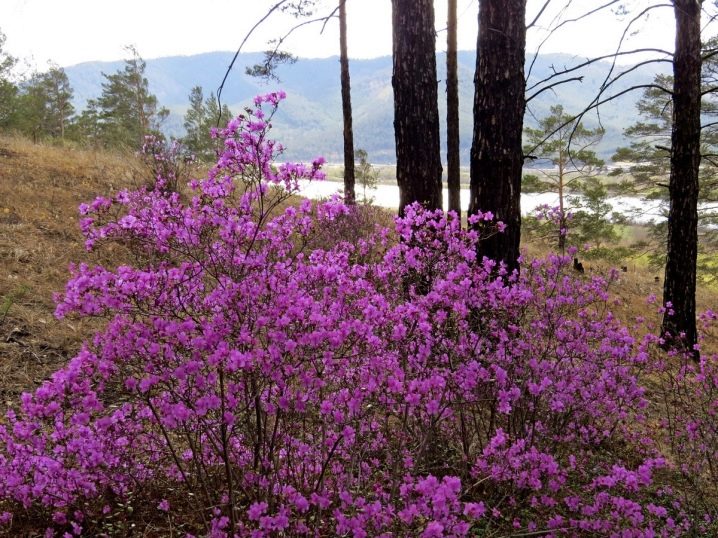
Description
Many plants have several names at once, and the Transbaikalian wild rosemary is no exception. Moreover, just such a common name for this species is incorrect. The term "Daurian rhododendron" is more correct from a botanical point of view. But this confusion in any case does not prevent the plant from being a true decoration of Transbaikalia. Already at the junction of April and May, when there are usually no leaves yet, it begins to bloom.
Violet-pink blotches on the hills look very attractive. The scent spreads over a long distance.
Botanists have established that the Daurian rhododendron south of Lake Baikal appeared even before the onset of the last ice age. It is curious that at about the same time the first settlers reached these places. But even the advance of the glacier did not lead to the disappearance of this bush.
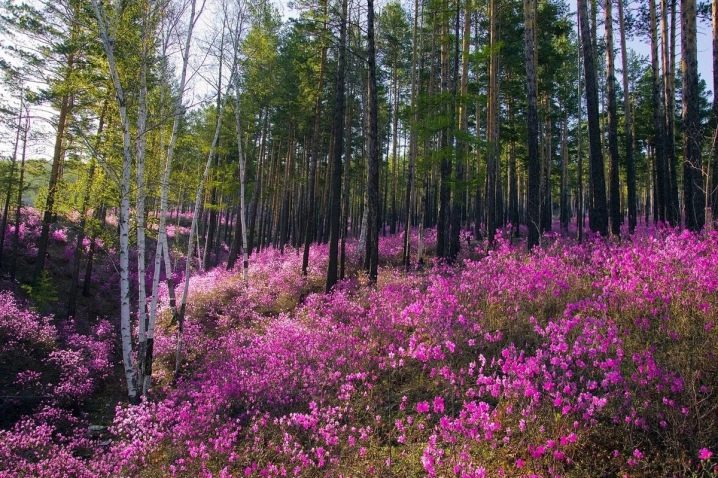
On the contrary, he only became more enduring and settled very widely. This heather plant is called Rhododendron dauricum in Latin. For a long time, the exceptional variability of the species did not allow giving it a clear and unambiguous botanical description. Only in 1978 was the exact range of rhododendron established. But even now, it is often confused with similar visually.
Its flowers give the wild rosemary an exceptional charm. The plant, surviving the harsh East Siberian winter, blooms surprisingly beautifully. From time to time it can be seen even in August and in the first third of autumn. The flowers are not only beautiful, they are also saturated with nectar. This is an excellent melliferous plant, but as regards edibility, the indications of the sources differ.

Important: in Transbaikalia there are other rhododendrons, very similar, but listed in the Red Book.
The wild rosemary itself has not yet hit it. However, only local residents can collect it, and even then in a limited amount. It is completely unacceptable to export the region abroad. The plant that has become a symbol of the Trans-Baikal Territory:
- reaches a height of 50-200 cm;
- gives oval leaves, rounded towards the end, 13-40 mm long and 5-10 mm wide;
- includes 20 to 40 twig-like shoots;
- forms an apical inflorescence;
- gives a peduncle 3-5 mm long;
- differs in a scaly structure of the ovaries;
- it also differs in very short petioles (8 or 10 times shorter than the leaf plate);
- gives fruit-boxes.
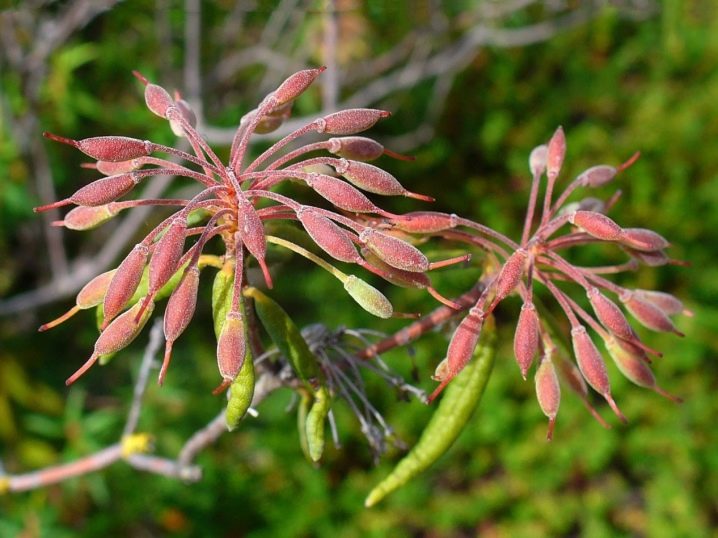
Where does it grow?
The Trans-Baikal Ledum can be seen both to the east (right up to the Pacific coast) and to the west (where it reaches Altai). Basically, rhododendron is found in the midst of thickets of larch and pine. The most preferable for it are sparsely wooded areas with dry land. Such a plant, like other rhododendrons on Earth, has a pronounced mountain character. Its biological role is to curb soil erosion, so it would not be an exaggeration to say that without this type of hillside will lose their characteristic forest cover at all.
The Trans-Baikal wild rosemary is also found outside Russia. It was described in the north of Mongolia and in the northeast of the PRC, on the Korean Peninsula, on Sakhalin and even on the Japanese islands. Rhododendron is represented by both individual bushes and thickets in the forest. They also find it in oak thickets.In Eastern Siberia, it forms an extensive cover, which looks especially attractive when buds are formed.
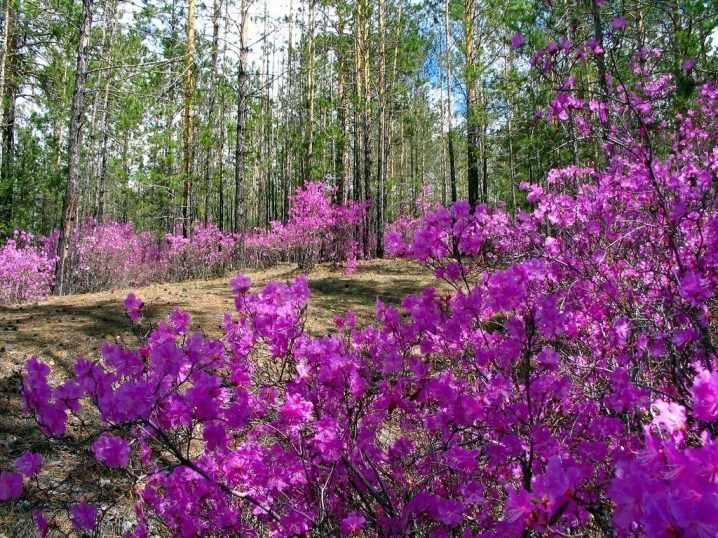
Growing
The beauty of the flowering of the Daurian wild rosemary has made it very popular among gardeners. This type is unpretentious, but this does not mean that you can ignore the elementary nuances. This plant is usually planted in rock gardens or near conifers. A chain of shrubs can create a full-fledged hedge. They will also be well perceived around junipers and ferns.
Residents of almost all of Russia, except for the most severe regions, can see how the Trans-Baikal wild rosemary bloom. It tolerates thick shade and even frosts down to -45 degrees. Important: all the constituent parts of the plant are toxic. Breeders have managed to create a number of varieties, among which are especially in demand:
- "April Domination" (undersized shrub with double flowers);
- "April snow" (especially frost-resistant type with early flowering);
- hybrid variety "Elite", which grows up to 4 m;
- low hybrid type "Chess".
Reproduction of the Daurian rhododendron by seeds is a very long activity and is suitable only for experienced people. Beginners are better off using layering.
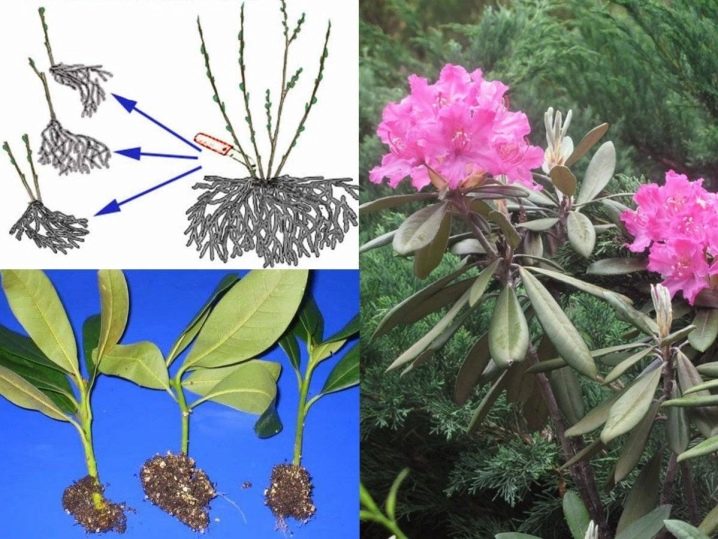
In the spring or autumn months, the strongest shoot is chosen from among those close to the soil. The lower part of the foliage is removed altogether, the upper part is shortened by half. Having prepared the shoot in this way, it must be laid out in a trench, and only 4-6 cm tops should rise above the surface.
Moistening and mulching are required. Next year, the cuttings will be ready for autonomous life. It is necessary to cut the Daurian rhododendron in July, when it has bloomed, highlighting areas of 10-15 cm. The cuttings are placed at an angle of 30 degrees in the nutrient mixture and kept warm in moist soil for 45 days. Then they must be transplanted into a larger tank and kept cool, but exposed to light. Planting readiness is achieved after 2 years.

Bushes of the Trans-Baikal wild rosemary can grow in one place for up to half a century. Better if it is a thoroughly lit area, but not flooded with sunlight. Stagnation of melt and rainwater is also unacceptable, as is the accumulation of water at the surface, while high acidity is perceived by the culture favorably. For several weeks, the bottom of the hole is covered with a layer of expanded clay or brick broken by 10-15 cm, then 1/3 (in height) of the nutrient mixture goes. When planting, the root system must be straightened, and after its completion, the near-trunk zone is covered:
- straw;
- leaves;
- disgraced needles.
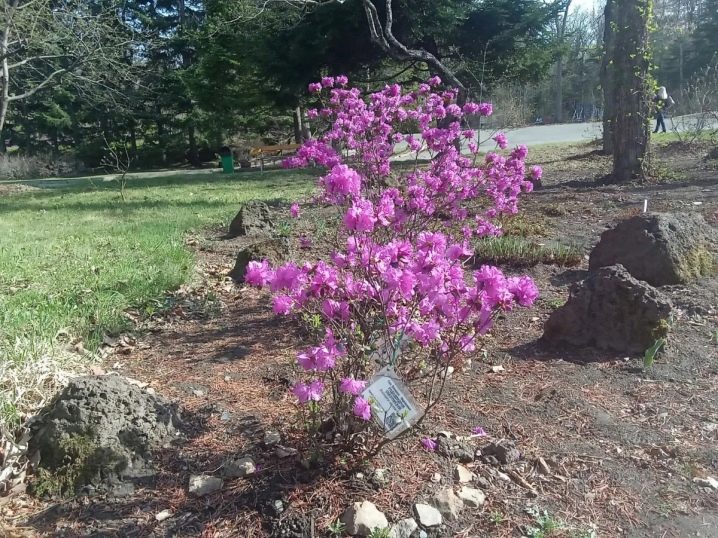
Care is simple: watering is carried out as the soil dries up. For this purpose, warm settled water is used.
It can be softened with acetic acid or citric acid. For 1 bush, 20 liters of water are used so that the soil is saturated with it. With the onset of the growing season, lay 10 kg of rotten manure or compost.
The next feeding is carried out after the end of flowering. Then phosphorus-potassium mixtures are used strictly according to the instructions. It is undesirable to use fertilizers containing chlorine. The crown is formed by itself, pruning is needed only for healing and rejuvenation. All faded brushes need to be cut out, and only young specimens need shelter for the winter.
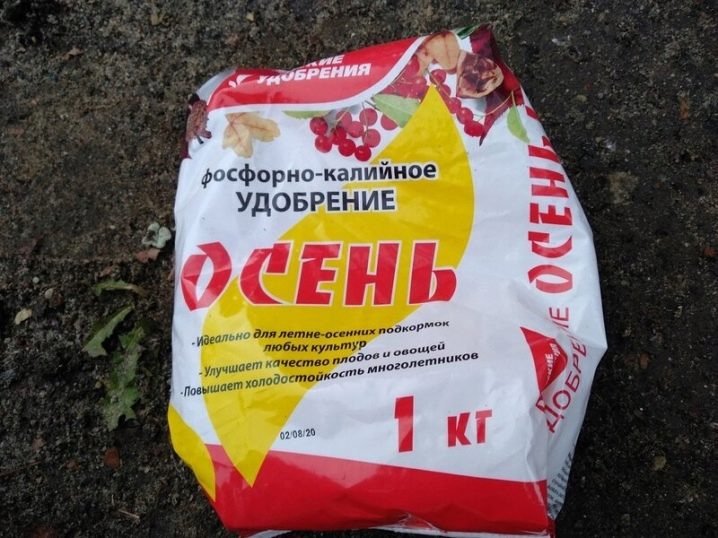







































































































The comment was sent successfully.